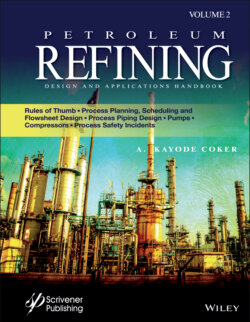Читать книгу Petroleum Refining Design and Applications Handbook - A. Kayode Coker - Страница 47
14.4 Computer-Aided Flowsheeting
ОглавлениеThe term “flowsheeting” with computer application performs steady state heat and mass balancing, sizing, and costing calculations for a chemical process. There are many approaches to computer-aided flowsheeting, but the principal ones are sequential modular flowsheeting simulation and equation-based flowsheeting simulation. Figure 14.4 shows the partitioning of the design step into three basic steps: synthesis, analysis and optimization. The flowsheet structure is chosen from the synthesis where the particular equipment is being used and its interconnections are selected. The synthesis step allows one to set initial values for the variables. The second step is analysis, which is broken into three parts: involves solving the heat and material balances, sizing and costing the equipment and economic evaluation. The final steps are parameter and structural optimization. During analysis of a given flowsheet, some pertinent parameters such as temperature and pressure can adversely influence the resulting equipment sizes and invariably the flowsheet evaluation. Consequently, a decision is made to either alter the equipment and its interconnection because an improvement is required or to revise the present version of the flowsheet due to high cost. Structural optimization refers to changing the equipment type and its interconnection while parameter optimization deals with altering the temperature or pressure levels within a fixed flowsheet. The final flowsheet with its decision variable values and the resulting flowsheet illustrate the final design. Flowsheeting is the examination of a flowsheet of the process being examined together with the complete system characteristic. It does not include dimensions and structural design of the plants nor instrumentation and planning of the piping network system. Further steps in flowsheeting are described by Coker [9].
Figure 14.4 Partitioning the process design task into interrelated subtasks (source: Westerberg, et al. [8]).
